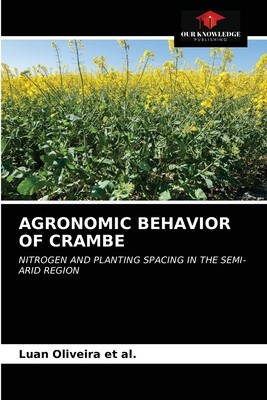
- We will send in 10–14 business days.
- Author: Luan Oliveira Et Al
- Publisher: Our Knowledge Publishing
- ISBN-10: 6203506168
- ISBN-13: 9786203506167
- Format: 15.2 x 22.9 x 0.4 cm, softcover
- Language: English
- SAVE -10% with code: EXTRA
Reviews
Description
The crambe (Crambe abyssinica Hoechst.) is a plant originally from Ethiopia, which spread throughout the Mediterranean region and parts of East Africa, thus adapting to different climatic conditions. In Brazil, interest in the culture of crambe arose in the central-western region of the country aiming, initially, to evaluate the behavior of these plants as a ground cover, being used later by farmers as an alternative forage in crop rotation and ground cover for no-till farming in the winter period. Due to the high oil content present in its seeds and because it is considered a non-food oilseed, not competing with crops intended for food production, the crambe has attracted the attention and interest of several institutions such as research centers and companies, both attracted by the use of its oil as biomass in the production of biofuels and bioproducts.
EXTRA 10 % discount with code: EXTRA
The promotion ends in 6d.10:06:52
The discount code is valid when purchasing from 10 €. Discounts do not stack.
- Author: Luan Oliveira Et Al
- Publisher: Our Knowledge Publishing
- ISBN-10: 6203506168
- ISBN-13: 9786203506167
- Format: 15.2 x 22.9 x 0.4 cm, softcover
- Language: English English
The crambe (Crambe abyssinica Hoechst.) is a plant originally from Ethiopia, which spread throughout the Mediterranean region and parts of East Africa, thus adapting to different climatic conditions. In Brazil, interest in the culture of crambe arose in the central-western region of the country aiming, initially, to evaluate the behavior of these plants as a ground cover, being used later by farmers as an alternative forage in crop rotation and ground cover for no-till farming in the winter period. Due to the high oil content present in its seeds and because it is considered a non-food oilseed, not competing with crops intended for food production, the crambe has attracted the attention and interest of several institutions such as research centers and companies, both attracted by the use of its oil as biomass in the production of biofuels and bioproducts.


Reviews